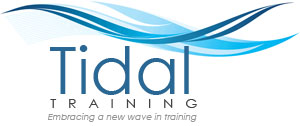
Tackling work-related stress
In the past few weeks, several businesses have announced mandated leave as stress management strategies for their employees, in a bid to combat chronic stress. Bumble announced a week off for all Head Office employees in June, closely followed by LinkedIn and Twitter, while Nike did the same in August. Citigroup meanwhile has taken a different approach and mandated Fridays without Zoom calls in order to combat fatigue, while retailer Home Bargains has confirmed it will close on Boxing Day and New Year’s Day to support its staff with much-needed time off. They have all made the announcements in response to chronic stress brought on by prolonged pressures from the pandemic, but what about supporting your team day to day?
Cumulative stress, also known as chronic stress, is the stress experienced by an individual as a result of a number of combining factors. These can be directly related to a heavy workload or workplace challenges, or may result from workplace stresses on top of stressors at home. Stress is a leading cause of workplace absenteeism, so having a mental health and stress management framework in place can really enhance health, wellbeing and productivity in the office.
The Health and Safety Executive (HSE) has long provided a step-by-step workbook supporting businesses to meet their legal and moral obligations, starting with a risk assessment and ending with practical guidance and strategies to implement, in addition to developing a stress management policy. It is further supported by the HSE stress website, which provides detailed information and case studies for work-related stress. In July 2021, a brand new ISO standard was launched, ISO 45003:202. The standards enable organisations to prevent work-related injury and ill health of their workers, offering guidelines for managing psychosocial risks. Generally speaking, following the steps set out by HSE will help to:
- pinpoint potential causes of stress in the workplace. This helps to align the opinions of employees with those of managers, and identify strategies to actually deal with those stressors
- implement coping strategies and a framework to support individuals in your team
- prepare the business case and rollout for the strategies, including communication.
The HSE system is an exemplary tool for helping to improve your stress management framework, but it does still require leadership by individuals that understand how to design the framework and have an awareness of what strategies exist to support their teams. What’s more, stress management cannot be ‘top down’ from the senior leadership team, but must be assimilated into organisational life across every team and every department. This requires the buy-in and understanding from every manager, team leader, support worker, and peer support team member, as well as awareness of every individual within the organisation.
To support this ambition, Tidal Training offer Stress Management Introduction Training which is designed to lift your stress management framework off the page, and help make it a core component of your workplace culture. It teaches your team to understand vulnerability and stress factors, as well as providing an understanding of stress reduction and relaxation techniques. In turn, these trained individuals can support the mental health of their colleagues and themselves, creating a culture of support.
While admirable, well deserved and no doubt beneficial, it is our belief that quickfire solutions such as mandated annual leave cannot be an organisation’s only, nor long-term strategy. Used for snapshot instances where workload has been abnormally high or extremely pressurised is one thing, but prevention of chronic stress should always be a business’s default position. How are you supporting your team’s mental health and helping to prevent cumulative stress in your teams?
Speak to our team on 01242 371 999 for more information on our stress management course.
